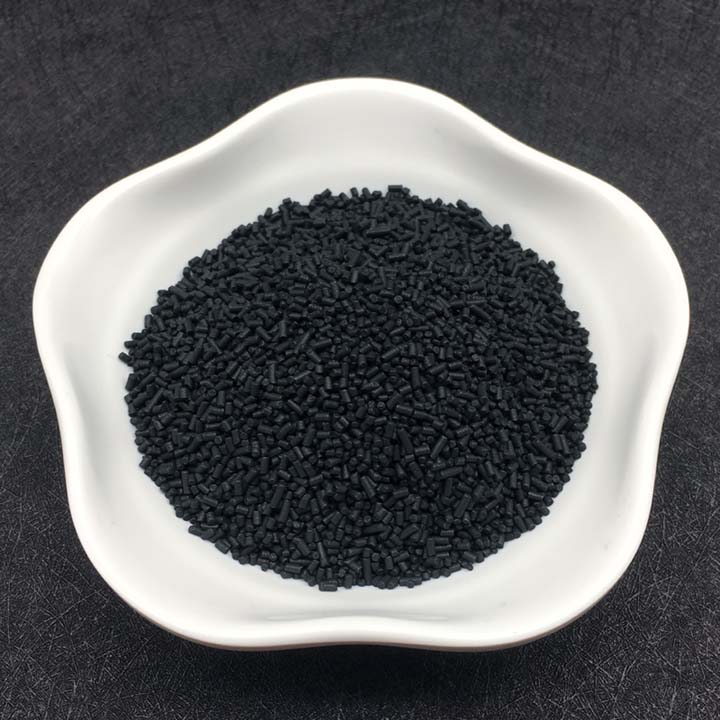1. The principle of carbon molecular sieve air separation to produce nitrogen
Carbon molecular sieve is the adsorbent of PSA nitrogen generator, which is separated from the air by the principle of pressure swing adsorption (PSA). The separation of oxygen and nitrogen in the air by carbon molecular sieve is mainly based on the diffusion rate of these two gases on the surface of carbon molecular sieve. Gas molecules (O2) with small particle size diffuse faster, and more gas molecules enter the micropores of carbon zeolite. The gas molecules (N2) with large particle size diffuse slowly and enter the carbon molecular sieve with a small amount of pores, so nitrogen-enriched components can be obtained in the gas phase. Therefore, the automatic control system completes the difference in the adsorption amount of nitrogen and nitrogen in a certain period of time by applying the pressure adsorption procedure, and realizes the separation of nitrogen and oxygen through the cycle process of atmospheric pressure method, pressure adsorption method, and atmospheric pressure method analysis method. , so as to obtain the required high-purity nitrogen.
Carbon molecular sieve nitrogen control conditions:
1. Air compression purification process.
In the carbon molecular sieve adsorption tower, because the carbon molecular sieve particles and organic gases enter the adsorption tower, the micropores of the carbon molecular sieve will be blocked, and the separation performance of the carbon molecular sieve will gradually decrease. The method of purifying the raw air is as follows: 1). Keep away from the air inlet of the air compressor, away from oil mist and organic gas; 2). The treated raw air enters the carbon molecular sieve adsorption tower through the cold dryer and adsorption purification system.
2. Nitrogen concentration and yield.
Carbon molecular sieve produces nitrogen, and its N2 concentration and gas production can be adjusted arbitrarily according to the needs of users. When the gas production time and operating pressure are determined, if the gas production is reduced, the N2 concentration will increase. On the contrary, the N2 concentration will decrease. Users can adjust according to actual needs.
3. Pressure equalization time
In the process of carbon molecular sieve nitrogen production, when the adsorption of the adsorption tower is completed, the pressurized gas in the adsorption tower can be injected into another regeneration adsorption tower from top to bottom, and the gas pressure of the two towers is the same. This process is called pressure equalization of the adsorption tower. Selecting appropriate pressure equalization time can recover energy, slow down the impact of molecular sieve in adsorption tower, and prolong the service life of carbon molecular sieve. The switching speed of the reference valve is generally selected as the pressure equalization time of 1-3 seconds.
4. Gas production time
According to the different adsorption and diffusion rates of carbon molecular sieve for oxygen and nitrogen, its adsorption of O2 will reach equilibrium in a short time. At this time, the adsorption amount of N2 is very small, and a short gas production time can improve the gas production of high carbon molecular sieve. At the same time, it also increases the operating frequency of the valve, so the performance of the valve is also very important. Generally, the adsorption time is selected to be 30-120 seconds. Miniaturized, high-purity nitrogen production equipment has short gas production time, and large-scale low-concentration gas production is long.
5. Operating pressure
Under the action of power, carbon molecular sieve has balanced adsorption, high partial pressure of adsorbate and large adsorption capacity, so pressurized adsorption is favorable, but the adsorption pressure is too large, which increases the modeling requirements of air compressors, and atmospheric regeneration The two processes of vacuum regeneration have different requirements for adsorption pressure, so the size of the adsorption pressure and the amount of adsorption are large.
6. Use temperature
Selecting a lower adsorption temperature as the adsorbent is conducive to exerting the performance of carbon molecular sieves, and is conducive to reducing the adsorption temperature when conditions permit.
